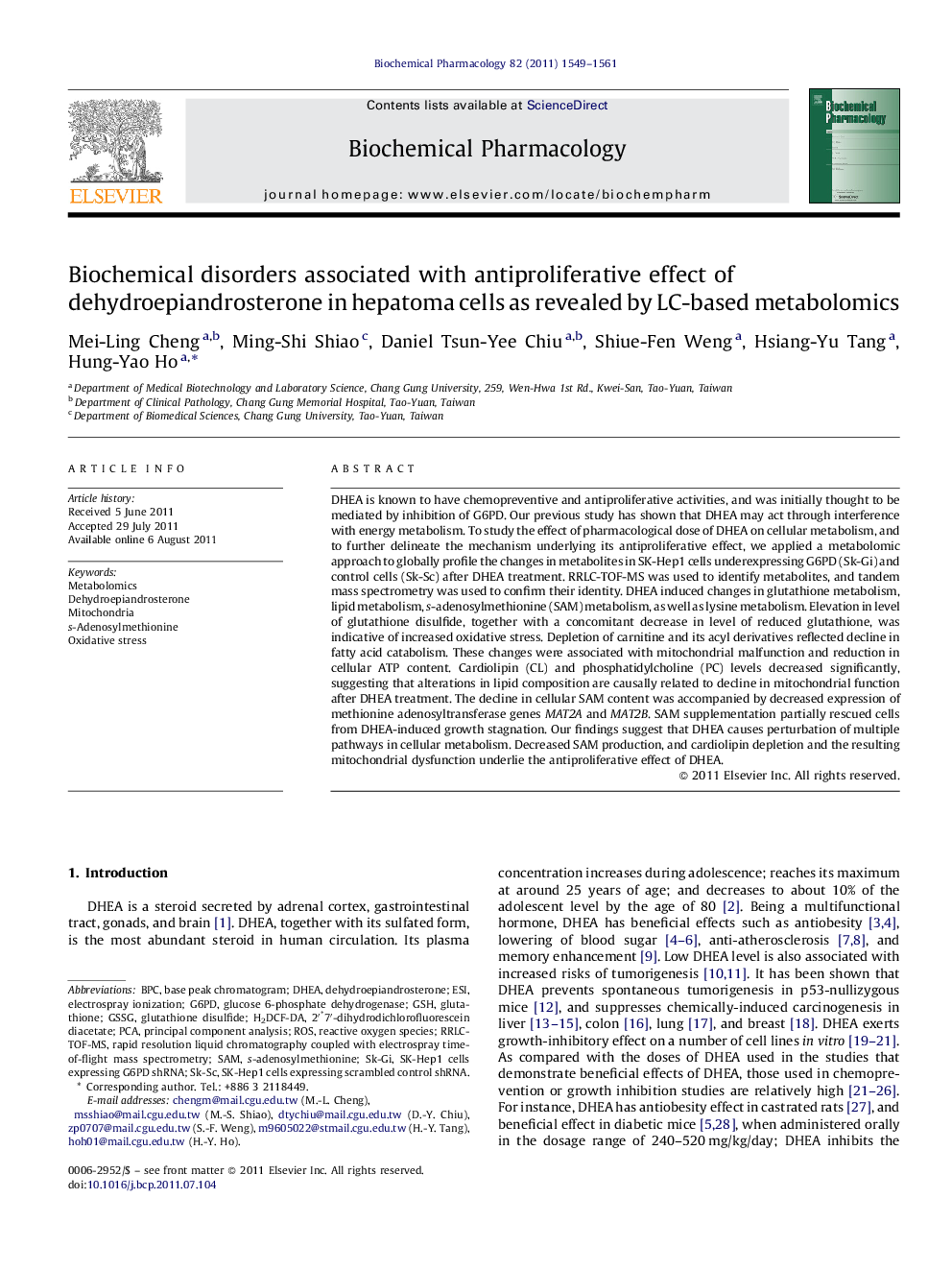| کد مقاله | کد نشریه | سال انتشار | مقاله انگلیسی | نسخه تمام متن |
|---|---|---|---|---|
| 2513022 | 1118389 | 2011 | 13 صفحه PDF | دانلود رایگان |

DHEA is known to have chemopreventive and antiproliferative activities, and was initially thought to be mediated by inhibition of G6PD. Our previous study has shown that DHEA may act through interference with energy metabolism. To study the effect of pharmacological dose of DHEA on cellular metabolism, and to further delineate the mechanism underlying its antiproliferative effect, we applied a metabolomic approach to globally profile the changes in metabolites in SK-Hep1 cells underexpressing G6PD (Sk-Gi) and control cells (Sk-Sc) after DHEA treatment. RRLC-TOF-MS was used to identify metabolites, and tandem mass spectrometry was used to confirm their identity. DHEA induced changes in glutathione metabolism, lipid metabolism, s-adenosylmethionine (SAM) metabolism, as well as lysine metabolism. Elevation in level of glutathione disulfide, together with a concomitant decrease in level of reduced glutathione, was indicative of increased oxidative stress. Depletion of carnitine and its acyl derivatives reflected decline in fatty acid catabolism. These changes were associated with mitochondrial malfunction and reduction in cellular ATP content. Cardiolipin (CL) and phosphatidylcholine (PC) levels decreased significantly, suggesting that alterations in lipid composition are causally related to decline in mitochondrial function after DHEA treatment. The decline in cellular SAM content was accompanied by decreased expression of methionine adenosyltransferase genes MAT2A and MAT2B. SAM supplementation partially rescued cells from DHEA-induced growth stagnation. Our findings suggest that DHEA causes perturbation of multiple pathways in cellular metabolism. Decreased SAM production, and cardiolipin depletion and the resulting mitochondrial dysfunction underlie the antiproliferative effect of DHEA.
Figure optionsDownload as PowerPoint slide
Journal: Biochemical Pharmacology - Volume 82, Issue 11, 1 December 2011, Pages 1549–1561